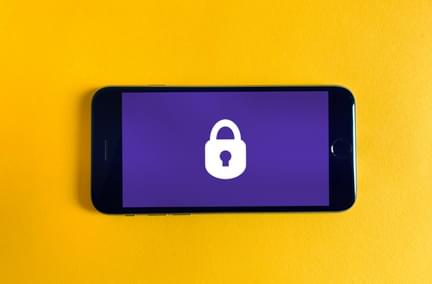14 Ways to Protect Yourself from Cyberattacks
Oct 18, 2023 | Cyber Security

In an increasingly digital world, the threat of cyberattacks looms large. Cybercrime is on the rise and getting worse every day. From identity theft to financial fraud, cybercriminals (a.k.a, hackers) constantly seek new ways to exploit vulnerabilities. As consumers, taking proactive steps to safeguard our personal information and digital lives is vital. While you can’t protect yourself from a data breach at outside companies, you can protect sensitive data on your devices. Cybersecurity awareness is key.
1. Protect Accounts with Strong, Unique Passwords
The foundation of cybersecurity begins with strong, unique passwords for every online account. Avoid using easily guessable passwords such as "123456" or "password." Instead, create complex passwords that include upper and lower-case letters, numbers, and special characters. Consider using a passphrase, a combination of words, or a phrase that is meaningful to you but difficult for others to guess.
2. Employ Multi-Factor Authentication (MFA)
Multi-factor authentication is an extra layer of security that requires your password and a second piece of information, such as a one-time code sent to your mobile device. Enable MFA whenever possible, as it drastically reduces the chances of unauthorized access to your accounts, even if your password is compromised.
3. Keep Software and Systems Updated
Regularly update your operating system, software, and applications. Software updates often contain critical security patches that fix known vulnerabilities. Cybercriminals exploit outdated systems and software to gain access to your device, making it crucial to keep everything up-to-date. To be sure your system is up to date, set it to receive automatic updates to the latest operating system, apps, and drivers.
4. Use Antivirus Software
Install reputable antivirus software on your devices. These programs can detect and remove malware, spyware, and other malicious software that might compromise your system. Ensure that your antivirus software is set to automatically update and scan your device regularly.
5. Be Wary of Phishing Scams
Phishing is a common tactic used by cybercriminals to trick individuals into revealing sensitive information. Be cautious when receiving unsolicited emails, especially those with suspicious links or attachments. Verify the legitimacy of emails, especially if they request personal or financial information. Contact the organization directly rather than clicking on any provided links if in doubt.
6. Raise Your Awareness
Stay informed about the latest cybersecurity threats and best practices. Understanding cybercriminals' techniques can help you recognize potential threats and avoid falling victim to them. Numerous online resources, webinars, and courses are available to increase your cybersecurity knowledge.
7. Secure Your Wi-Fi Network
Your home Wi-Fi network is an entry point for cyberattacks. Secure it with a strong password, change the default admin credentials, and consider hiding your network's name (SSID). Regularly check for firmware updates on your router, and enable encryption, such as WPA3, to protect your network from unauthorized access.
8. Perform Regular Backups
Frequently back up your data to an external hard drive or a secure cloud service. In case of a ransomware attack or data loss, having a backup can save your important files and prevent you from becoming a victim. Ensure your backup is not connected to your network while not in use, as some malware can target backup files. This is also a good practice because your device’s internal hard drive can fail, and if you haven’t backed up your data elsewhere, you might never get it back.
9. Avoid Public Wi-Fi for Sensitive Activities
Using public Wi-Fi for activities like online banking or accessing sensitive accounts can expose you to various risks. Cybercriminals can intercept data transmitted over unsecured networks. If you must use public Wi-Fi, consider using a virtual private network (VPN) to encrypt your internet connection and add an extra layer of security. Try to avoid typing in your credit card information on public Wi-Fi. Reserve purchases and online banking at home or on another private network.
10. Regularly Check Financial Statements
Keep a close eye on your financial statements. Regularly review your bank and credit card statements to spot any unauthorized or suspicious transactions. If you notice any discrepancies, report them to your financial institution immediately.
11. Check Social Media Privacy Settings
Review and adjust the privacy settings on your social media accounts. Limit the information you share publicly, and be cautious about the personal details you disclose online. Cybercriminals often use social media to gather information for phishing attacks or identity theft.
12. Be Cautious of Public Computers
Avoid using public computers for sensitive activities, such as online shopping or banking, as you cannot guarantee their security. If you must use a public computer, ensure you log out of all accounts and clear your browsing history and cookies after use. Because these computers are public, hackers can install key click tracing software to show them everything you typed, including personal data such as credit card and bank account information and passwords.
13. Install Device Tracking and Remote Wipe Software
Consider installing tracking and remote wipe applications for smartphones and other mobile devices. These tools can help you locate your device if lost or stolen and allow you to erase your data remotely, preventing unauthorized access to your personal information.
14. Regularly Check Your Credit Report
Request a free credit report from major credit bureaus like Equifax, Experian, and TransUnion at least once a year. Review the report for any unauthorized credit inquiries or accounts opened in your name, which could indicate identity theft.
Protecting yourself from cyberattacks is an ongoing process that demands vigilance and a proactive approach. By following these best practices, you can significantly reduce the risk of falling victim to cybercriminals and safeguard your personal information in an increasingly interconnected world. Remember, staying informed and taking preventive measures are key to maintaining digital security and peace of mind.
- cybersecurity
- online security
- cyberattacks
- data protection
- secure shopping
- identity theft





